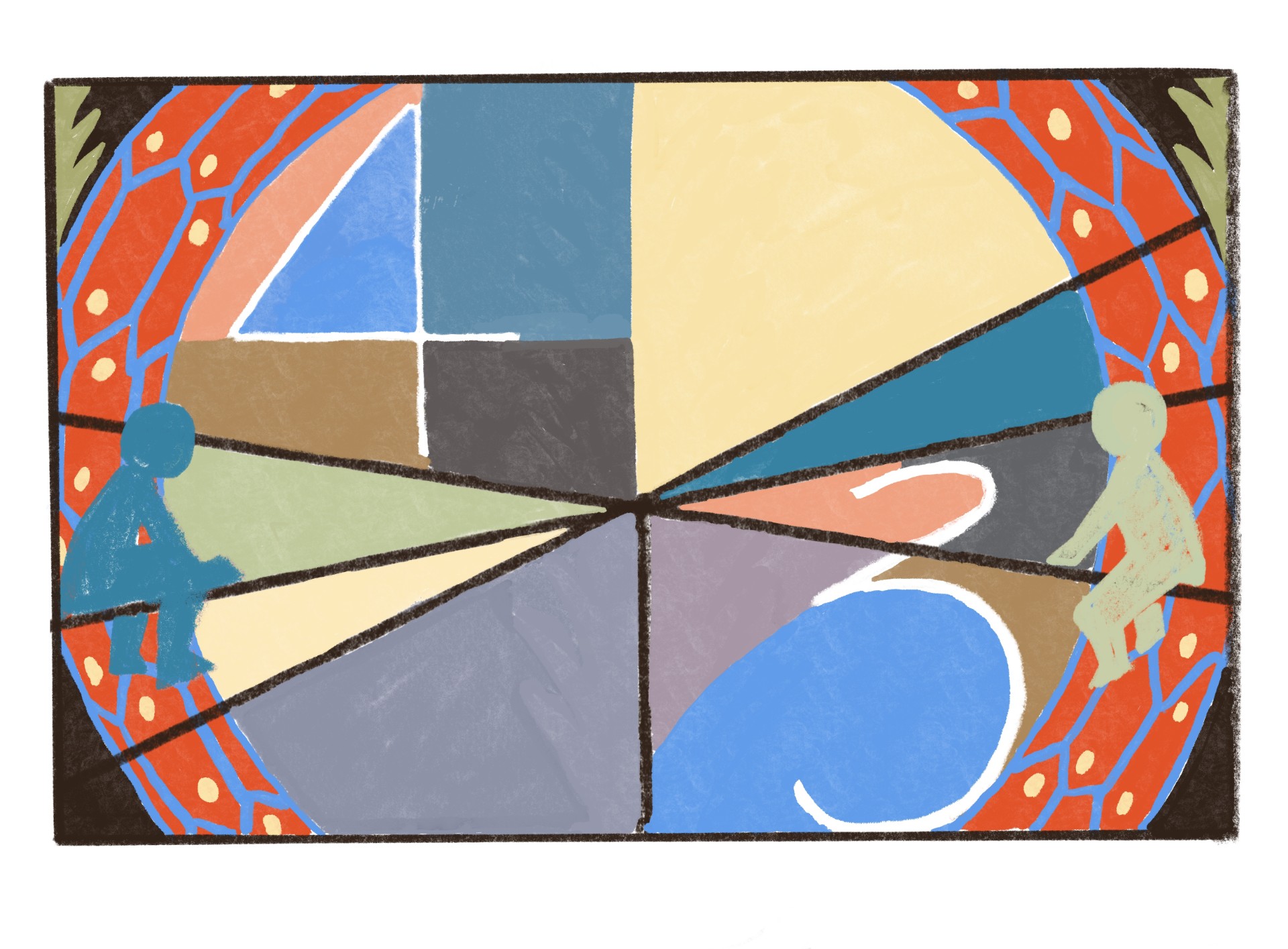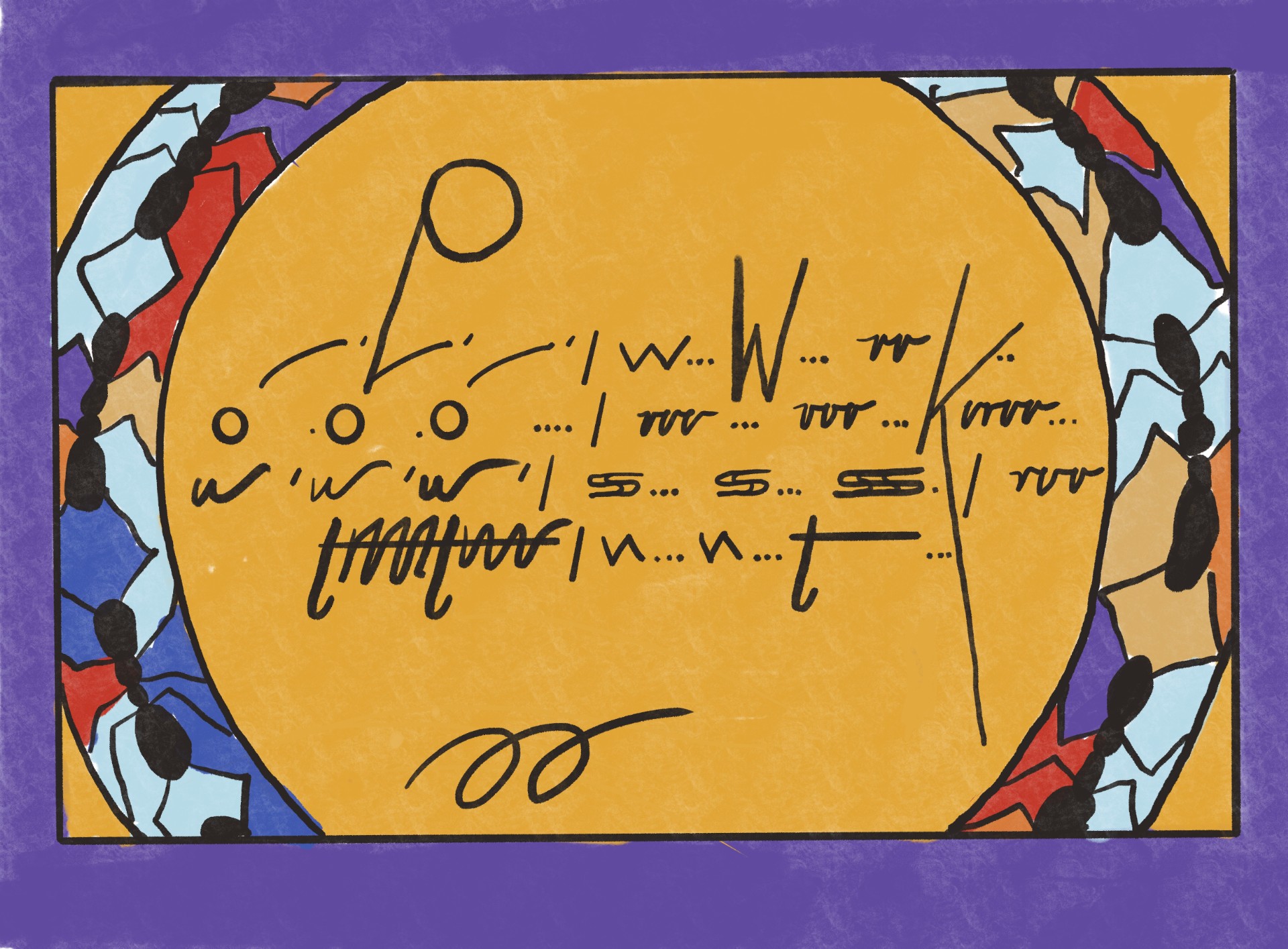4+3=1
THERE ARE STORIES TO BE FORGED FOR COMMON DENOMINATORS TO COME FORTH AND SOCIAL BALANCE TO BE RESTORED
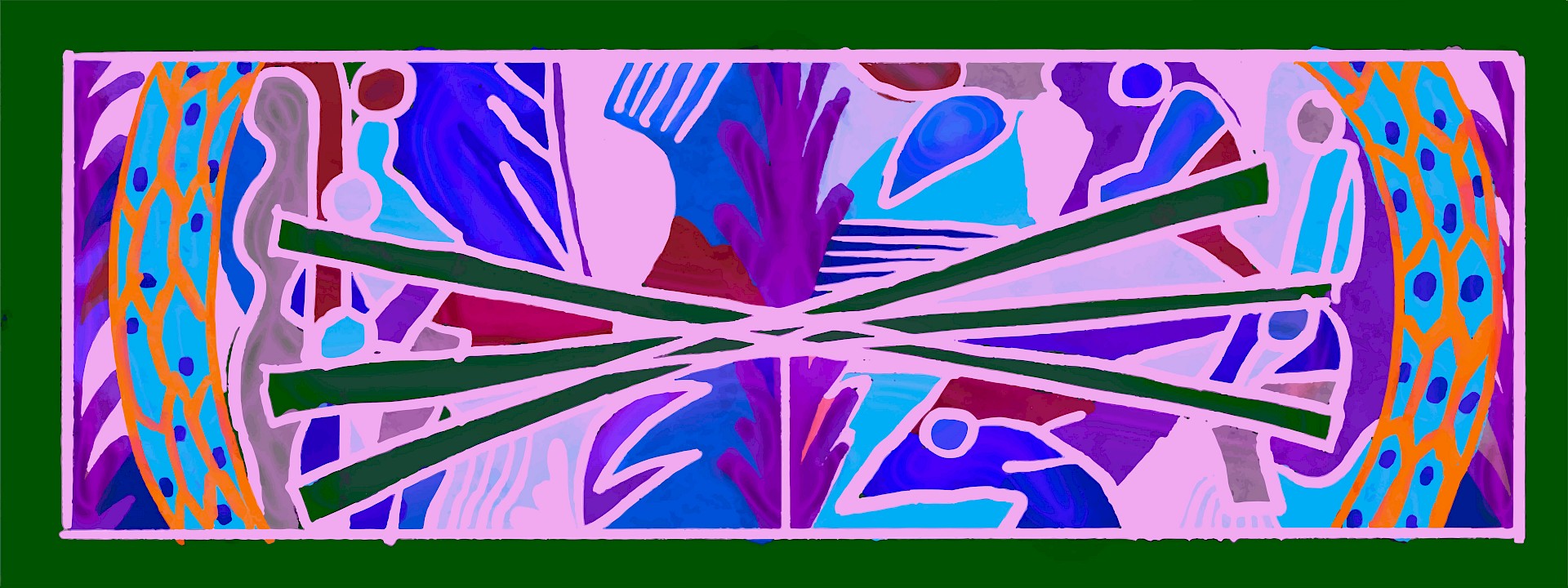
Exhibition
OPENING 22.07.2022 19:00
With a performative activations by Léuli Eshrāghi at 20:00 and Marie Lloyd Paspe at 21:00, followed by a DJ-Set by Yha Yha from 22:00 on
ON SHOW 23.07.–02.09.2022 Thursday–Sunday 14:00–19:00
WITH Castiel Vitorino Brasileiro, Qianxun Chen, Diana Ejaita, Bilge Emir, Léuli Eshrāghi, Azin Feizabadi, Elizabeth Glauser with Emilio Cordero, Al Hassan Issah, Lito Kattou, Rie Nagai, Eli Wewentxu & Sharon Mercado Nogales, Zohra Opoku, Mithu Sen, Viron Erol Vert
SAVVY Contemporary is a ground floor wheelchair accessible space. For further assistance please send us an email (communications@savvy-contemporary.com).
SAVVY TOURS IN SAVVY TONGUES
05.08.2022 17:00 In English
With Kelly Krugman
12.08.2022 17:00 In German
With Lynhan Balatbat-Helbock and Anna Jäger
26.08.2022 17:00 In Spanish
With Kelly Krugman and Lynhan Balatbat-Helbock
02.09.2022 In 17:00 In English
With Kelly Krugman and Arlette-Louise Ndakoze
NUEVOS TERRITORIOS
11.08.2022 19:00
Exhibition activation with Eli Wewentxu & Sharon Mercado Nogales
CEREMONY / PARTY AS METHOD
18.08.2022 20:00
WITH Cali Rose, Jewel, Kewin Bonono with Eric Peter, and Maryisonacid
AT Trauma Bar and Kino [Heidestraße 50, 10557 Berlin]
Becoming Ancestors
STORY-TELLING WORKSHOP 27.08.2022 10:00–14:00
WITH Vivian Ngozika Aghamelu
INVOCATIONS
03.09.2022
With Mehyar Abboud with Alaa Abboud, Aida Bueno Sarduy, Devika Chotoe, Marie-Clêmentine Dusabejambo, Rona Geffen, Chikako Kaido with Jascha Viehstädt, Wynton Kelly Stevenson, Loulou Sylla, Sona Tatoyan, Sarah Wesley
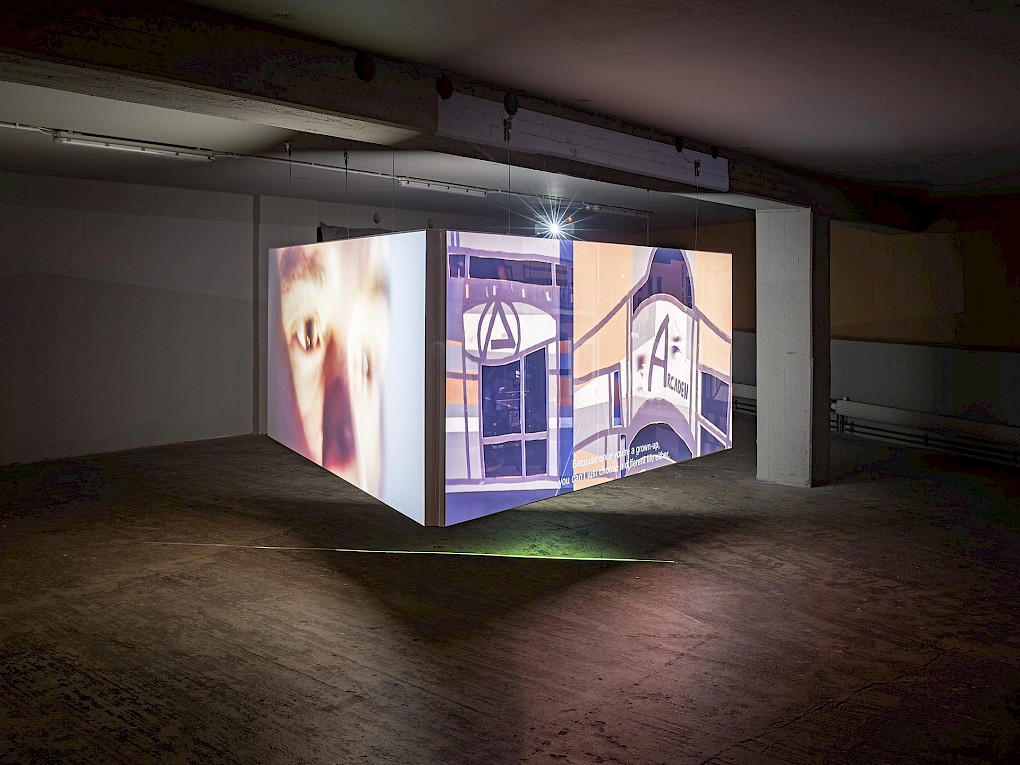
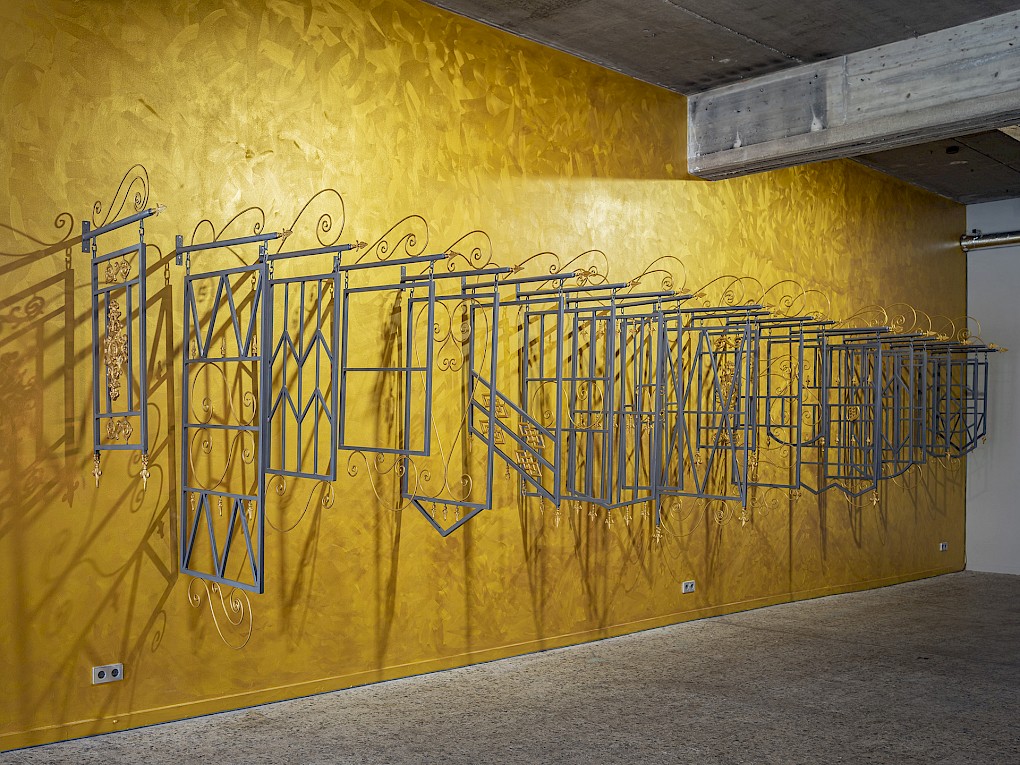
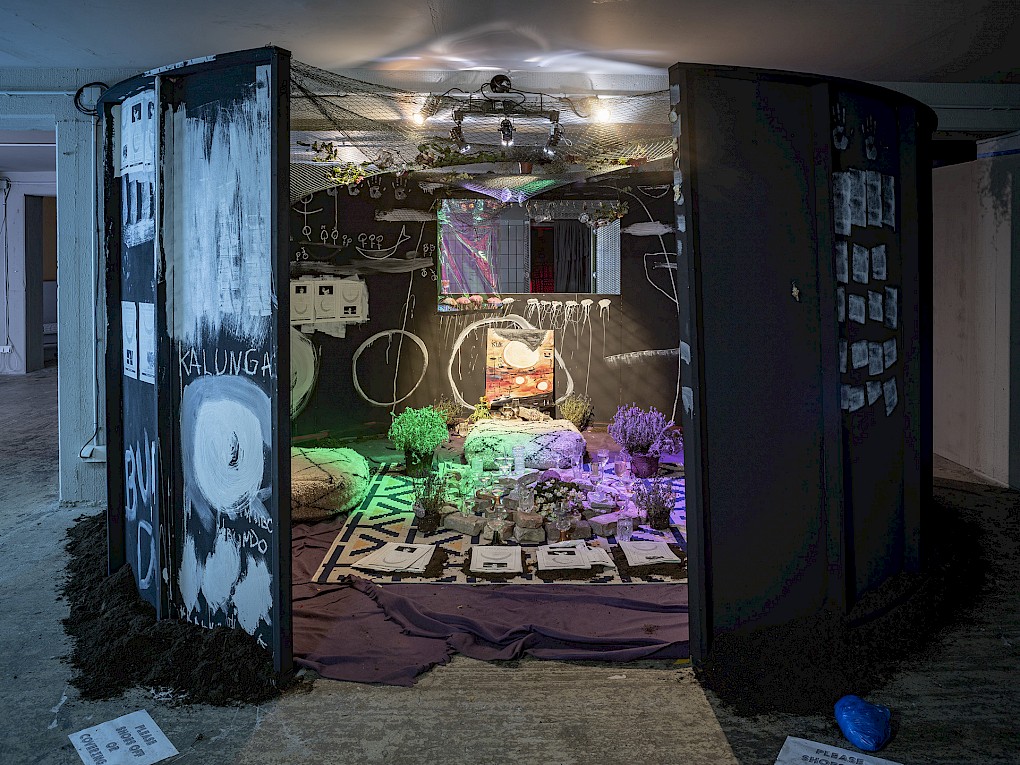
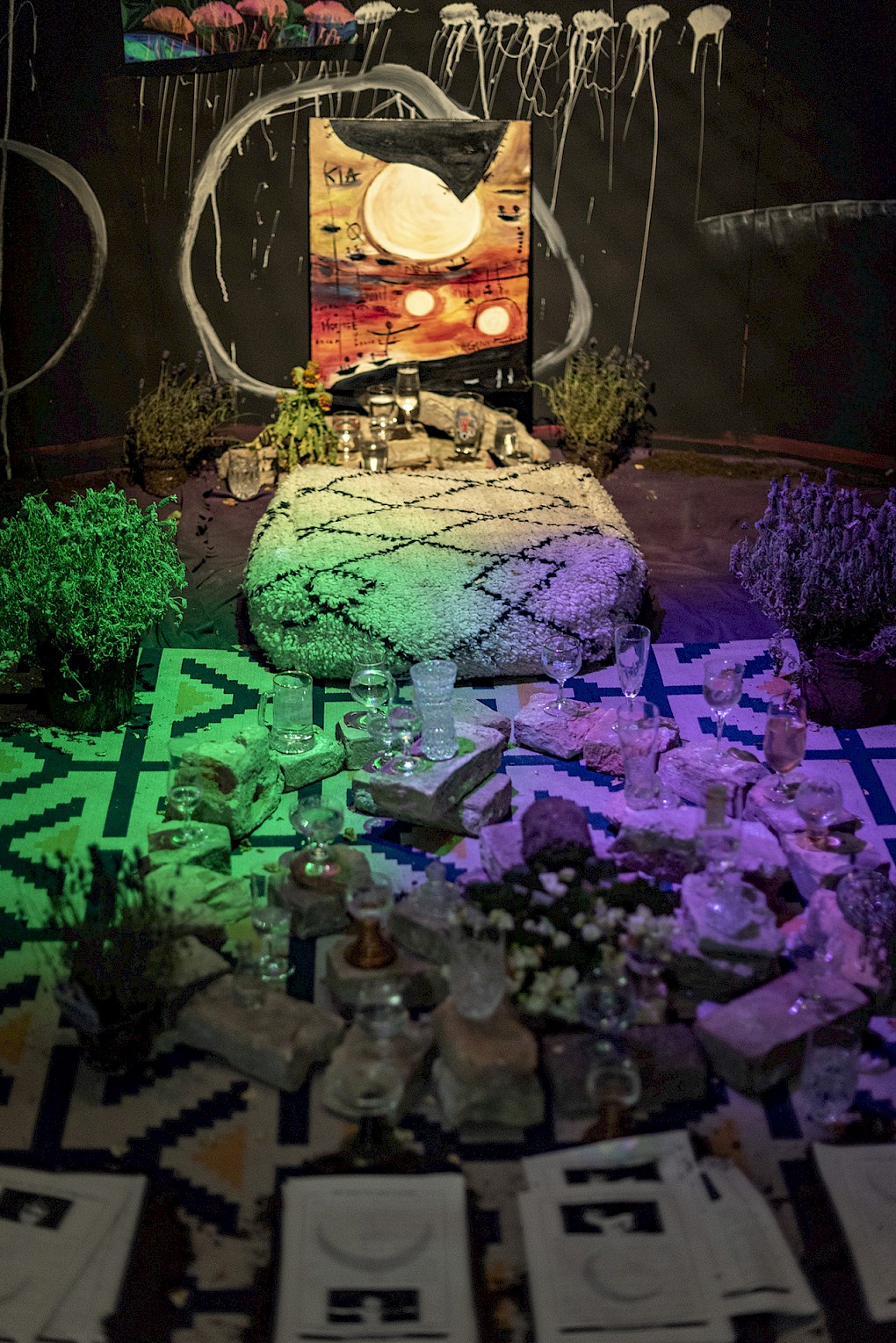
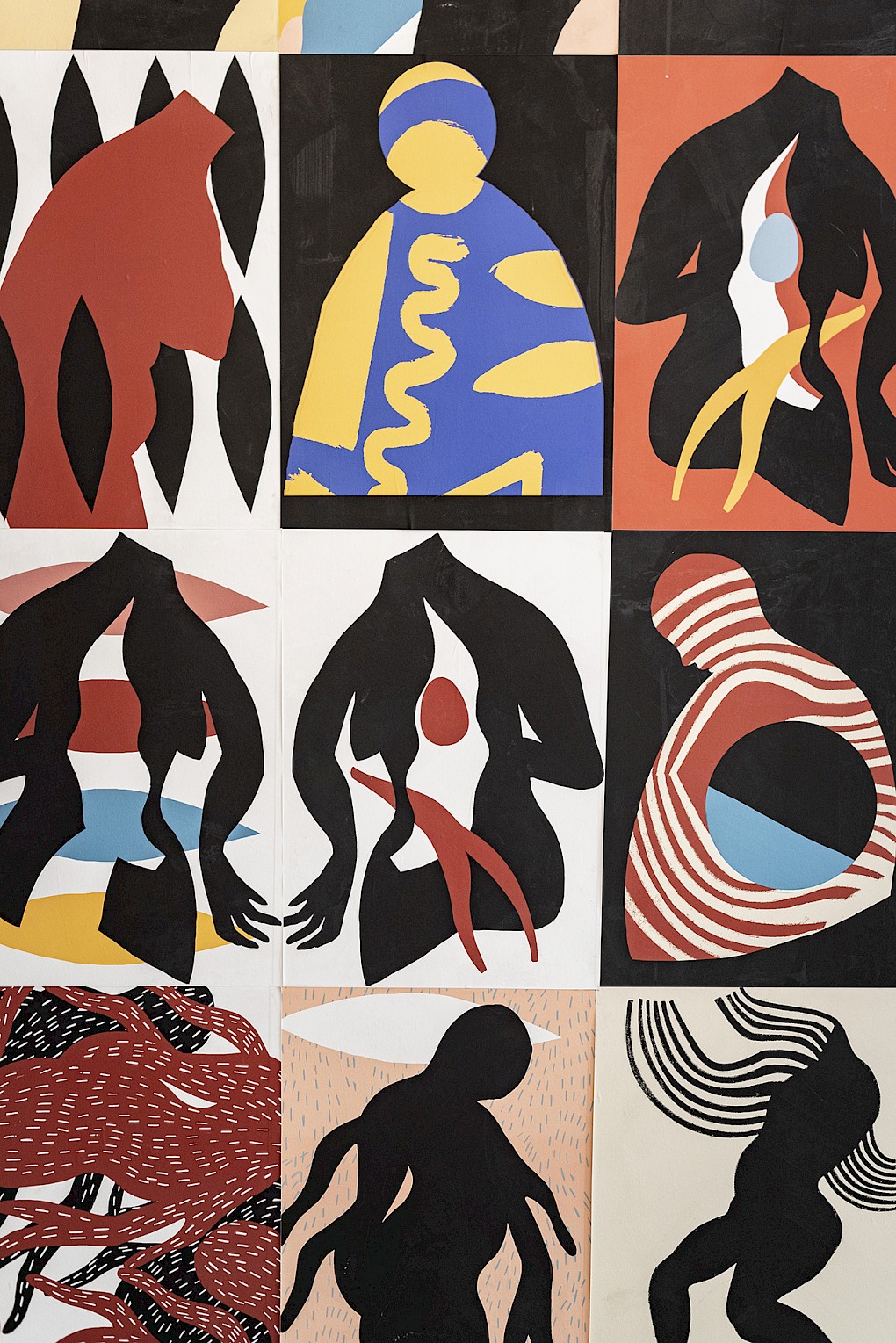
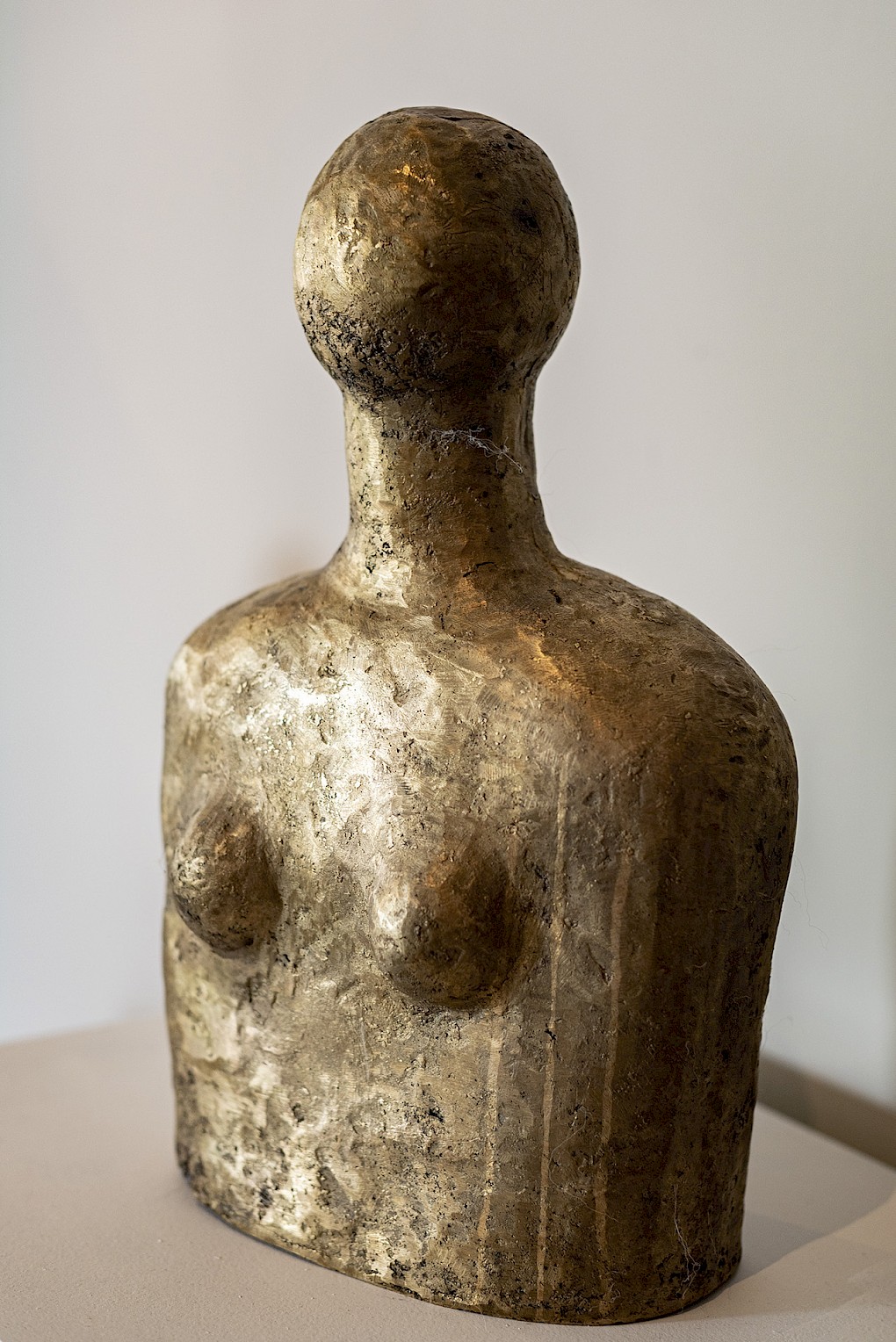
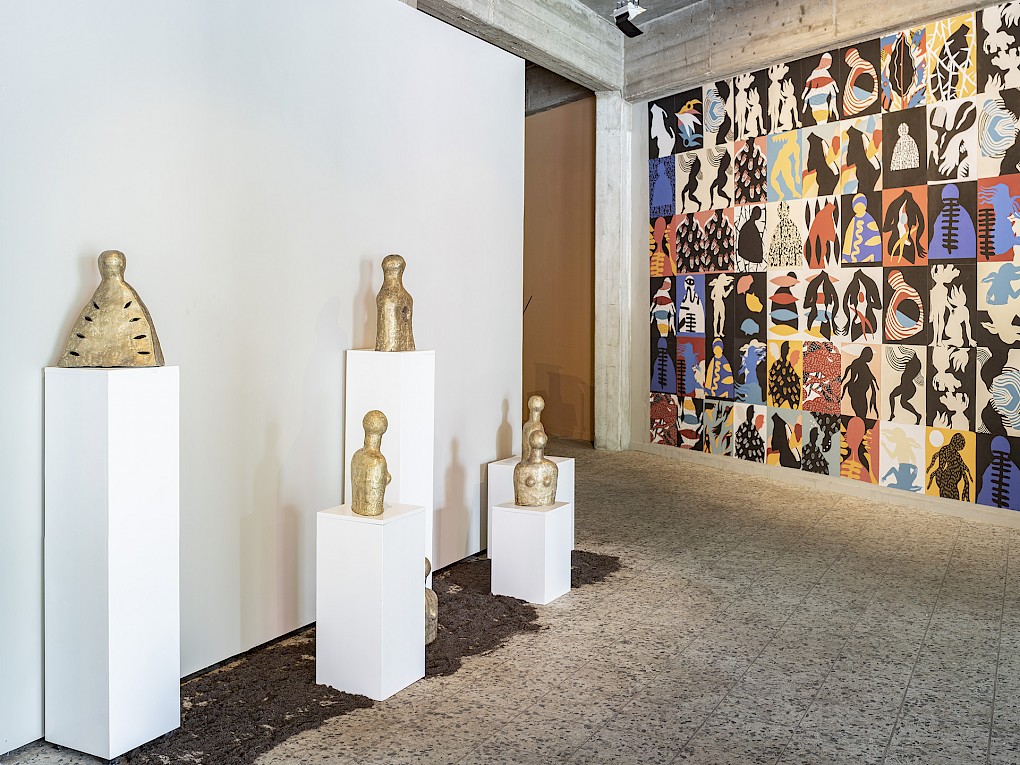
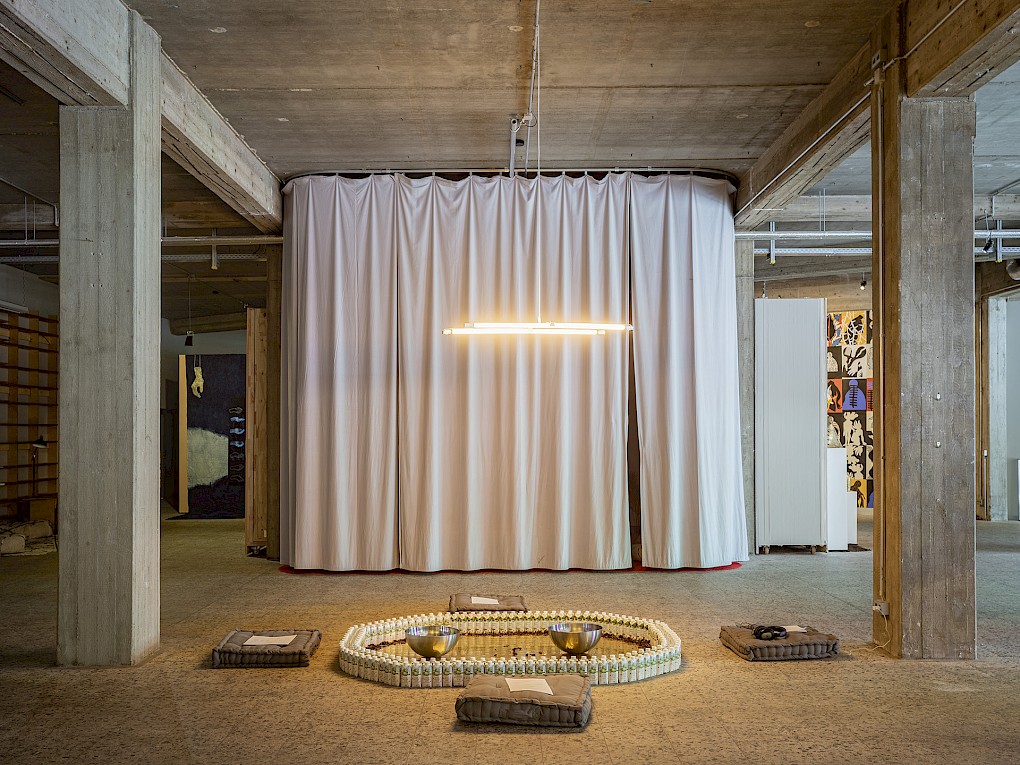
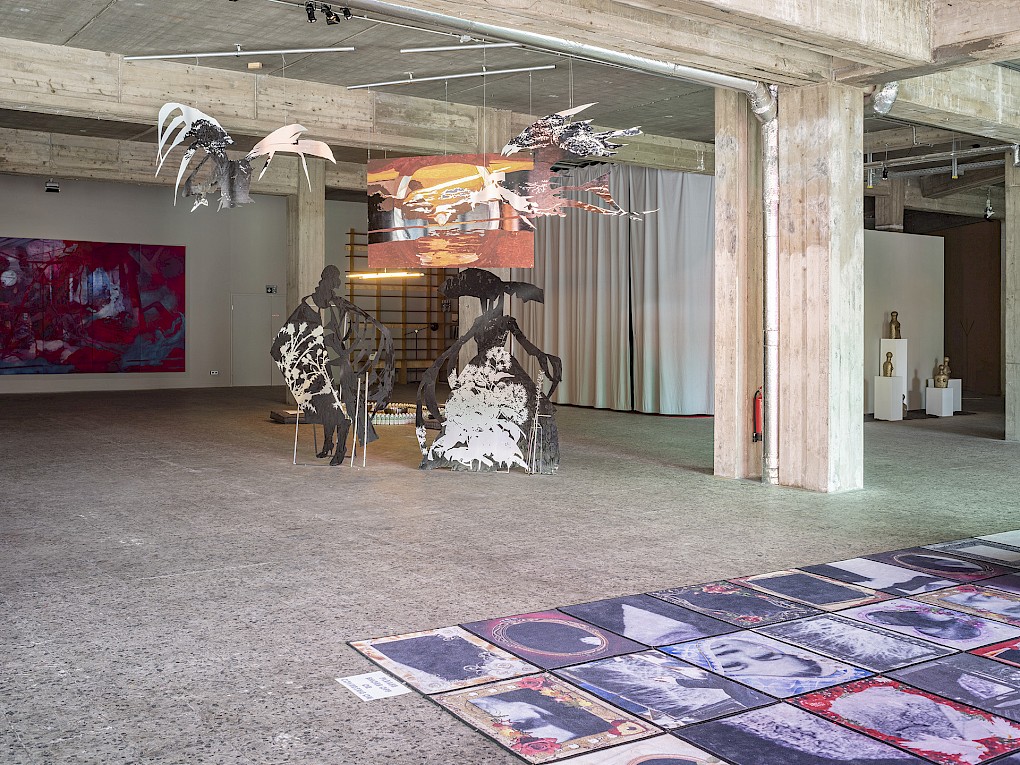
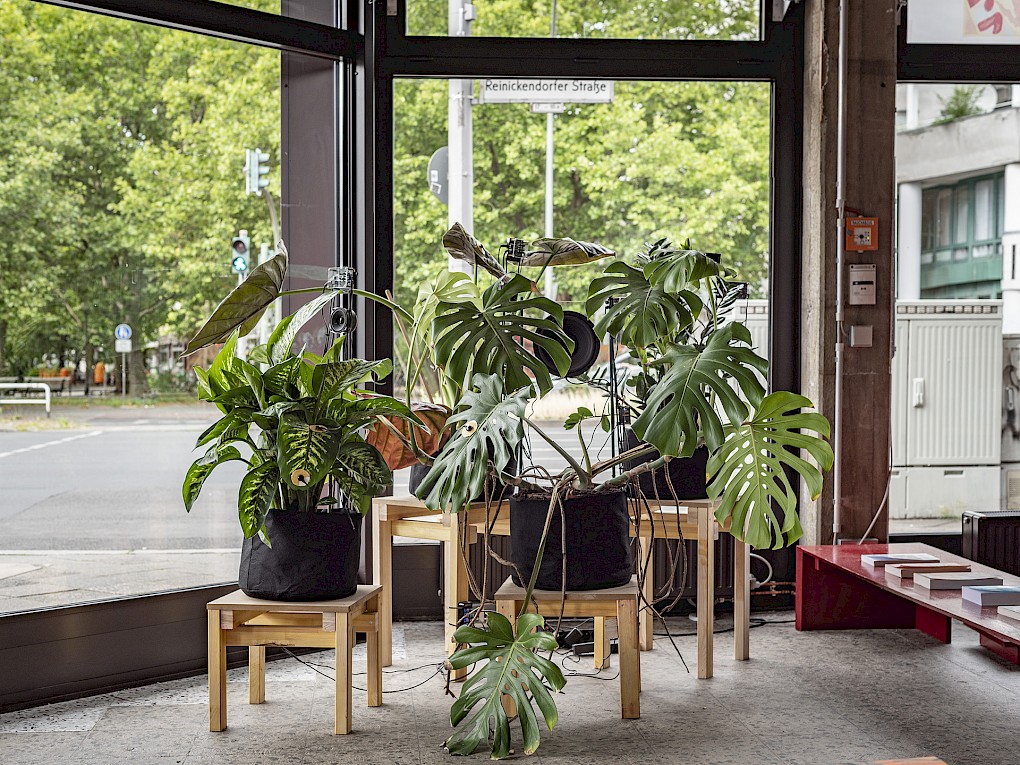
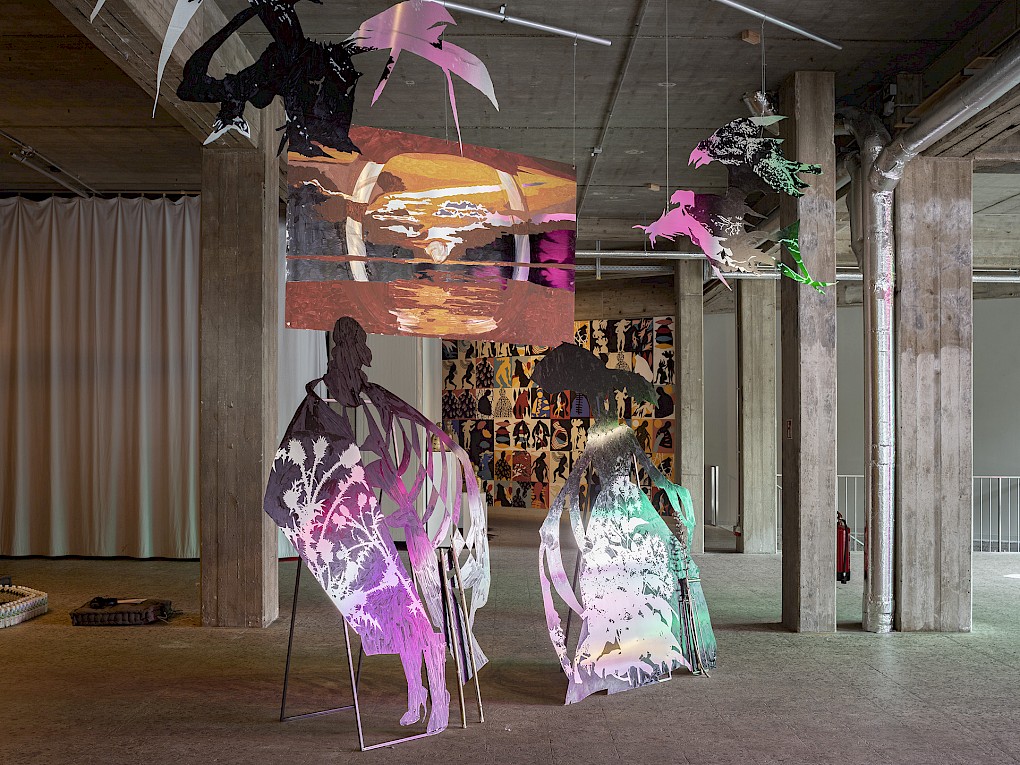
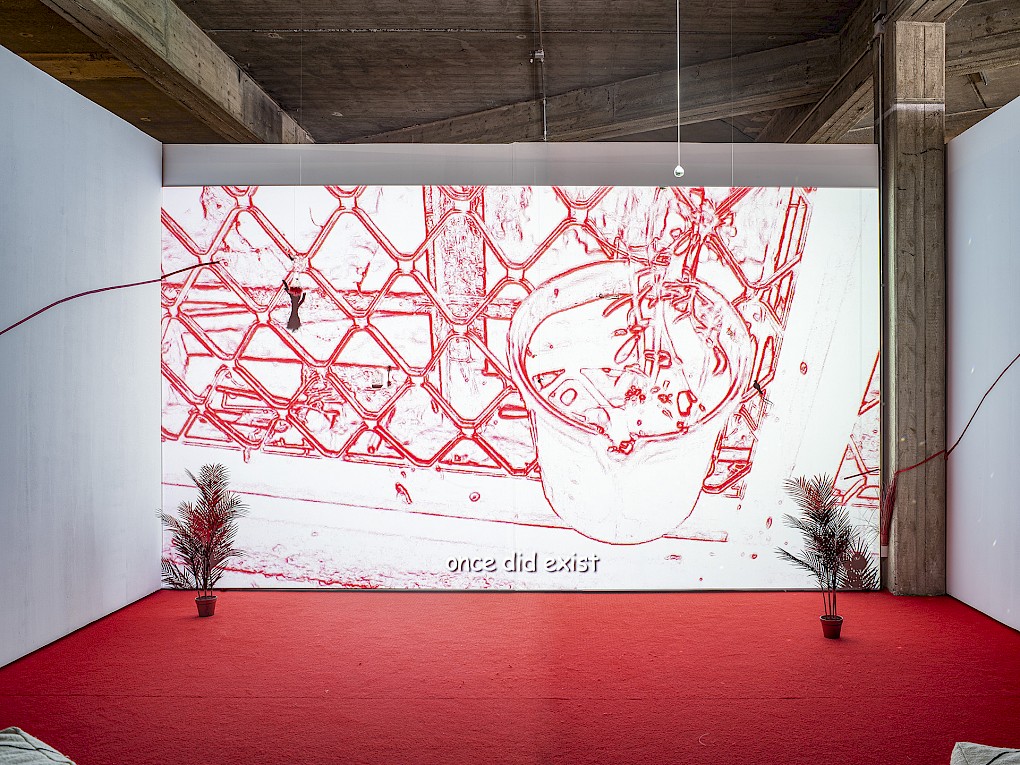
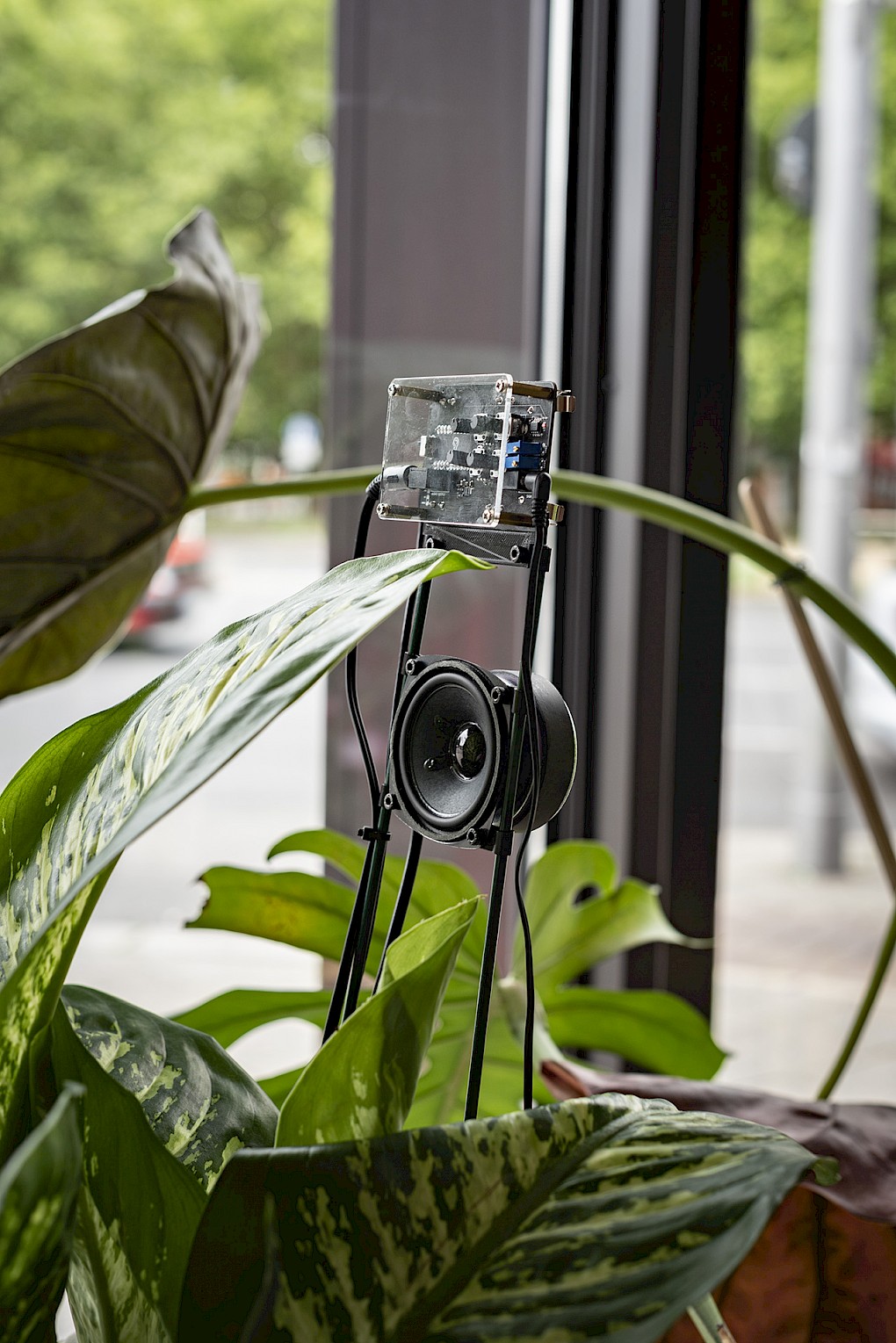
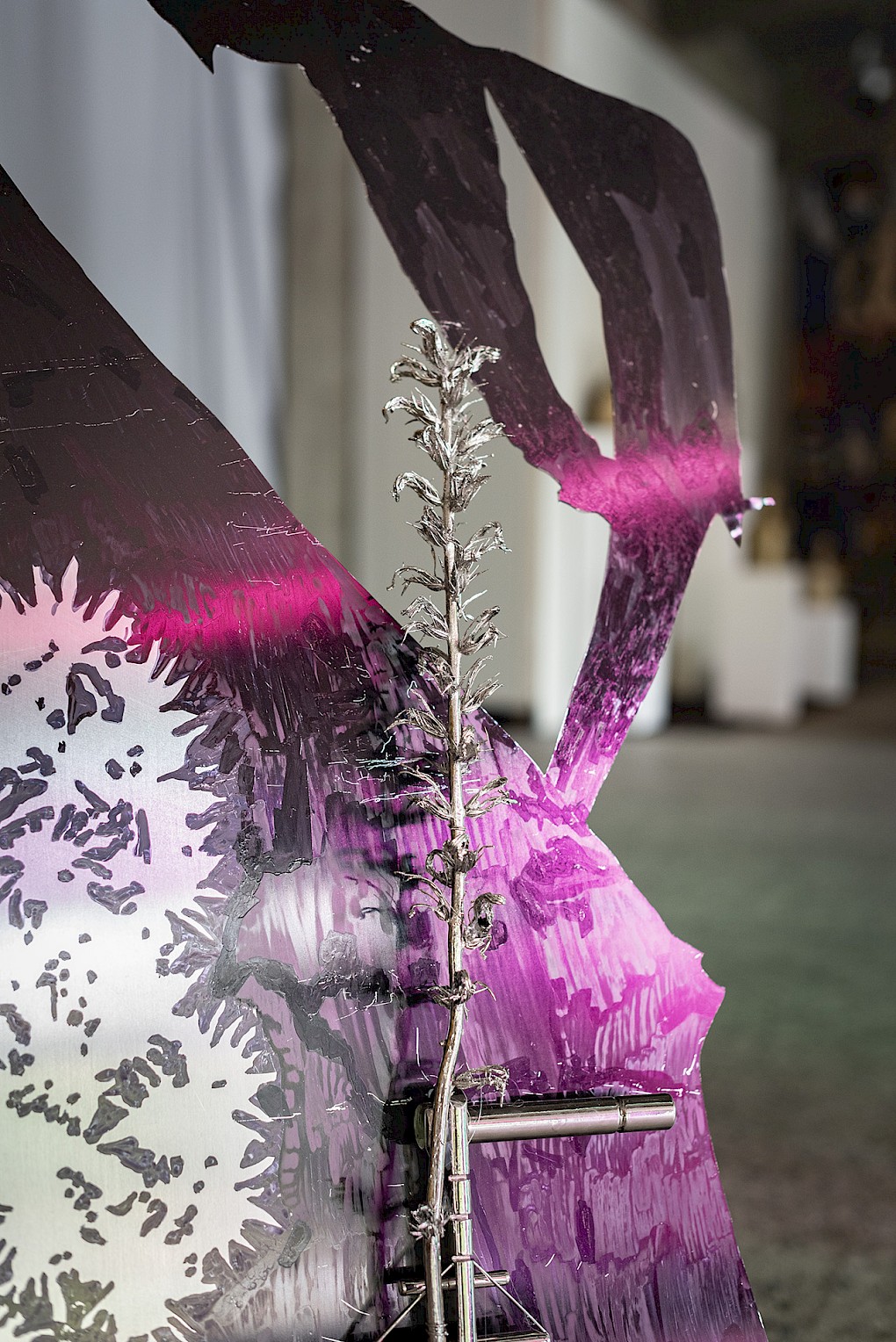
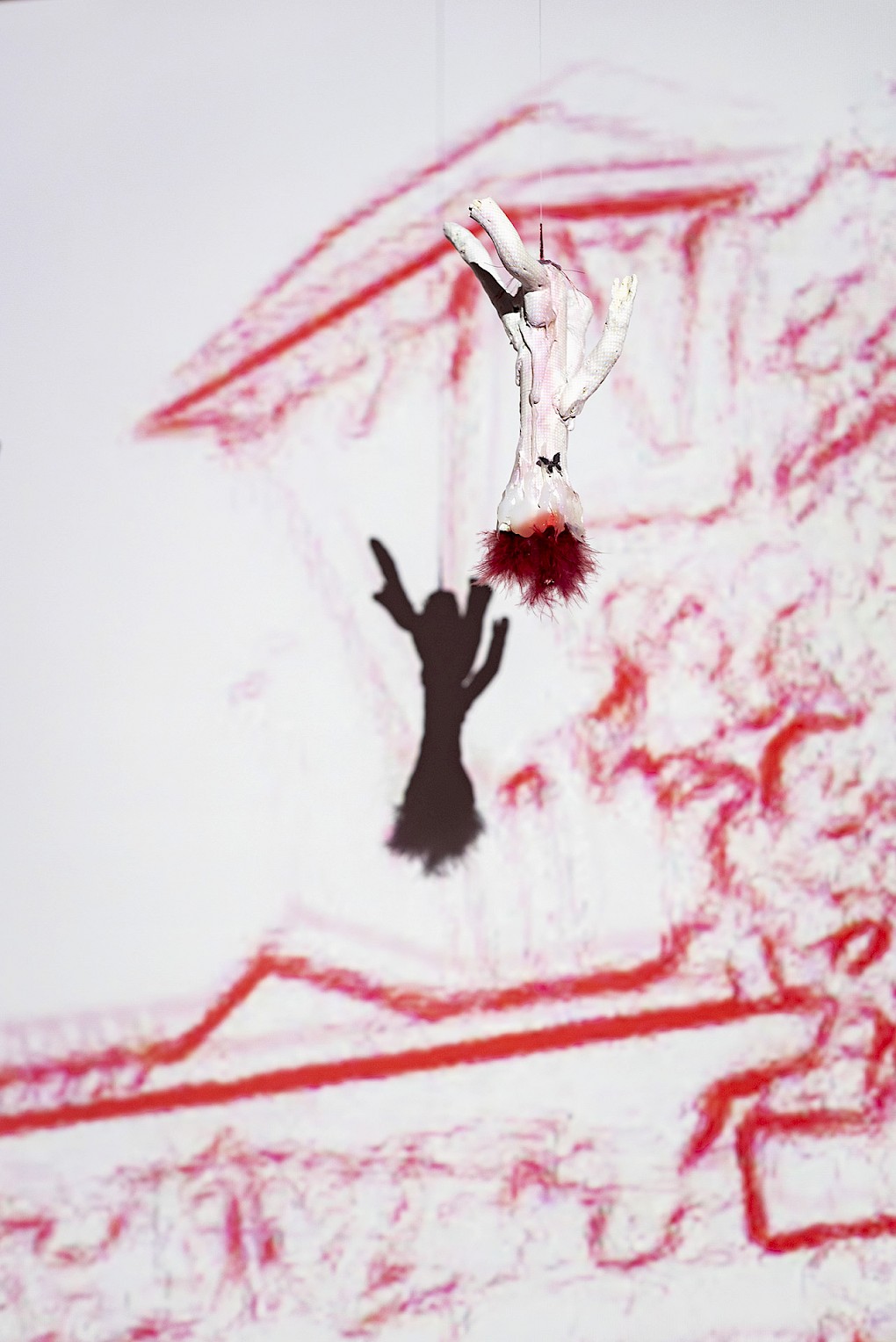
How do we recompose a common in a society marked by separations? The project 4 +3 =1 seeks to enact common denominators that tell (hi)stories in order to engage with the possibilities of repairing and restoring societal balance(s).
Since time immemorial, Western ideologies have generated and narrated commons: those points when circles intersect into commonplaces. Yet, these commonhoods have been produced by systems of limitations, dualities, and exclusion, lacking relationality and equilibrium between humans, as well as humans and nature. Alternative commons have long existed, African philosophies extend plural ecosystems of connection: As underlined by Marimba Ani, in Ancient Bantu philosophy “nature” was and still is understood as “ntu”, the “rhythm”, the “universal life force” that humans are a part of.
Considering their inclusive ground, within this research and exhibition project, we seek knowledge from ancient non-Western philosophies and narratives, to better understand and enact the common denominators that can regulate our societies today. One of these trajectories we look into are the ancient Egyptian traditions of composing “beings” based on nature’s forces: in it, feminine forces are symbolised by the number 4. It carries the masculine, and the society in general. Masculine forces are symbolised by the lower number 3. The equation hence becomes: Four + Three = Community. FourPlusThreeEqualsOne.
Fundamentally, the project asks, “How can we integrate the performative multiplicities that the feminine, masculine, fluid, or non-conforming hold into our shared realities? In the core, it is about understanding that they can mutually carry and influence one another – within the subjective embodiments of their experiences, and their manifold existences in societies. How can ancestral philosophies in their embraces of coalescing and varied forces teach us ways of recalibrating community nourishment?”
As M. NourbeSe Philip writes, history is underscored by memory and tethered to etymologies of deliberation, grief, recollection, documentation, and martyrous sacrifice. As narrations and stories are recalled, told, retold, dormant, forgotten, and revived, they are simultaneously vested with life, death, and circulations of spirit. We trail the potency of ancient mythologies and their cosmogonies that ask us to remember and preserve ancient archives. We step with the ancestral into elliptical and transversal presence, near to stories seeking equilibrium. Together, passing into futures through limbic wings of intersecting time.
Visiting 4 +3 = 1, we arrive with an ancestral invocation, leading us from the skies and exterior of SAVVY Contemporary into the exhibition with its plural conceptions of time-space, where Eli Wewentxu and Sharon Mercado Nogales, together the Berlin-based duo Moviendo Territorios, act as migrant artists of Abya Yala/Latin America within diasporas in Germany. The clouds meet with our joined grounds as two symbols made of charcoal, soil, salt, and water cross points on the cement at our feet – carrying us into the cosmovisions of the Mapuche and Andean. A trio of videos shows interviews with indigenous elders alongside dance-activations, where acts of reciprocity with the body and for the earth coalesce.
Archive Books shares an archival inventory as activations of their library in relation to cosmologies beyond the West and a cross-pollination with a forthcoming exhibition in their space in Milan, entitled Spiritual Fabulations, on witchery practices and their multiplicities.
Lito Kattou greets us with hybrid interspecies beings beaming as shadows; with heads of trees and arms of insects they stand as warnings rising from the terrains: the fluid, mythical creatures speak of the repercussions of climate change and ask us to confront the ways the absences of honor towards relational cosmologies of care have brought us to points of earthly devastation.
From the windows and onto the carpet, moving through the space with green and purple light sourcing relations to ultraviolet zones, Viron Erol Vert emanates ruptures of many fragments, filling a carpet with family portraits of his parents, their images refusing to fit into the given frames. We are forced to question the sacred and the presumably profane as we meet perspectives cracking from conventions of group identity and self to enable our most potent and resonant expressions of integrity.
Al Hassan Issah translates and echoes public space from within, teleporting us from Germany to the ornamental and emblematic historicity of Ghana, in the forms of textures, sound, and materials representing separations of class or power within its urban centers and potential for re-equilibriums of social restoration.
We then move to realms of inner architectures of the seen and unseen, where Rie Nagai’s process of “kuuki wo yomu,” which in Japanese loosely conveys “reading the air”, connects to her ongoing research on places where people come together beyond the rules of the mundane. In her research on nightclubs in Berlin, she foregrounds the emotional charge to traverse the energetic remnants of collective spaces, transmitting their spirited expressions.
SAVVY.doc and the Arjun Appadurai Library present books traveling with cosmological multiplicities; ancestral commons, regulations, and shapeshifting ancients which stand at the focal core of their shelves with stories and tracings across transdisciplinary thought.
Zohra Opoku’s three canvases stitched with sutures are part of her series The Myths of Eternal Life, where in the wake of her cancer diagnosis she wove stories of devastation and rejuvenation from The Egyptian Book of the Dead. The texts sprawled atop linen dyed with indigo are communicating with ancient learnings on healing and protection for reclamations of power.
Mithu Sen’s video installation, I have only one language, it is not mine, exists in its own time-space, in a no-place of fantastical dimensions. The film follows Mago, a seemingly homeless person who speaks her own language, playing, sharing, and building intimacy with young orphaned girls in Kerala. Despite strugglesome realities, warming relations unfurl outside the narrow alleys of comprehension by means of the knowledge of the body.
Nearby, tagata a nuʻu poʻo tagata a faguʻu, Léuli Eshrāghi’s work which translates as “people of the villages/land or people of the bottled oil”, creates an alofisā (ceremonial circle) dedicated to Sāmoan ancestors that is founded on vā (spatial, multidirectional relationships with all kin) to call for ecological and genealogical repair.
We listen to the voices of plants with Qianxun Chen, as their biodata is transmitted through modulations. We channel into a relation towards environments as speaking beings, where their engagements are slow and subtle. The organic rhythmic cycles they emit rise into focus and share resonance with the ancient Chinese text 庄子齐物论, The Adjustment of Controversies, where agency exists across all life forms.
Diana Ejaita’s bronze sculptures ascend from the floors in a shared constellation speaking to a wall filled with multicolored and symbiotic shadow-beings where the wound becomes the passage transporting us to a magic-based, spiritual world encompassed by West African myths: where in-between spaces bustle with ancestors existing along planes of light and darkness, each sharing lessons on possibilities of living a full life.
The staircase of SAVVY descends us into territories of the subconscious and transmutational. In the basement, Azin Feizabadi’s triptych film Uchronia extends a shape-shifting tale of the ancient Persian love story, Layla and Majnun. The characters serve as a non-static vessel of the ancient tale underpinned by the yearning for corporeal proximity, societal sense-making, and love; a trans boy, older lovers, and children are the protagonists each echoing the film’s mantra, "We carry the past together”.
Neighboring is Castiel Vitorino Brasileiro's Quarto de Cura, the first of her five site-specific temples to occur outside of her birthplace Brasil. The circular structure is entered from behind, where Bantu ontologies and modes of transmutation are traced; moments of safety, liberation, recalibration, devotion, and other mysteries embedded with astronomy, black life, and solidarity speak forth.
A synthesized mix by Elizabeth Glauser blends sessions of the 4+3=1 Radio Books, emitting a manifold soundscape across practitioners and artists, who have joined in a chorus of research and knowledge emissions over the course of the last months through SAVVYZΛΛR with conversations across cosmologies streaming across sonic ethers.
Bilge Emir’s tapestries for the 4+3=1 RadioBooks bring their digital designs to life in the physical, unfolding at different heights throughout the space.
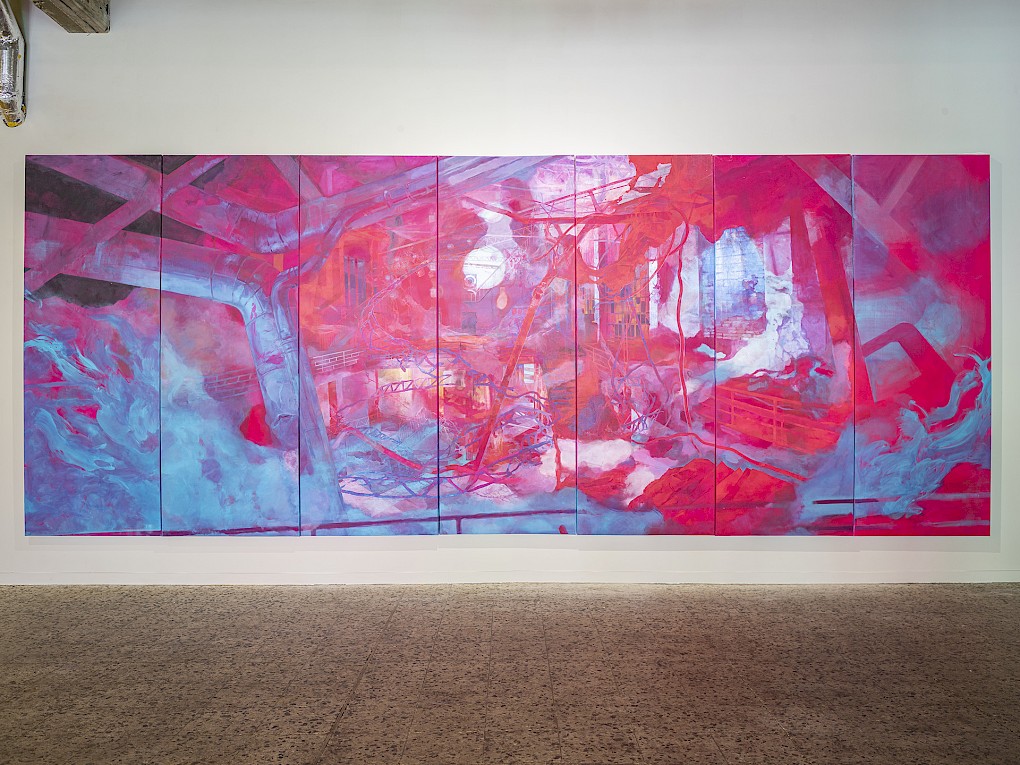
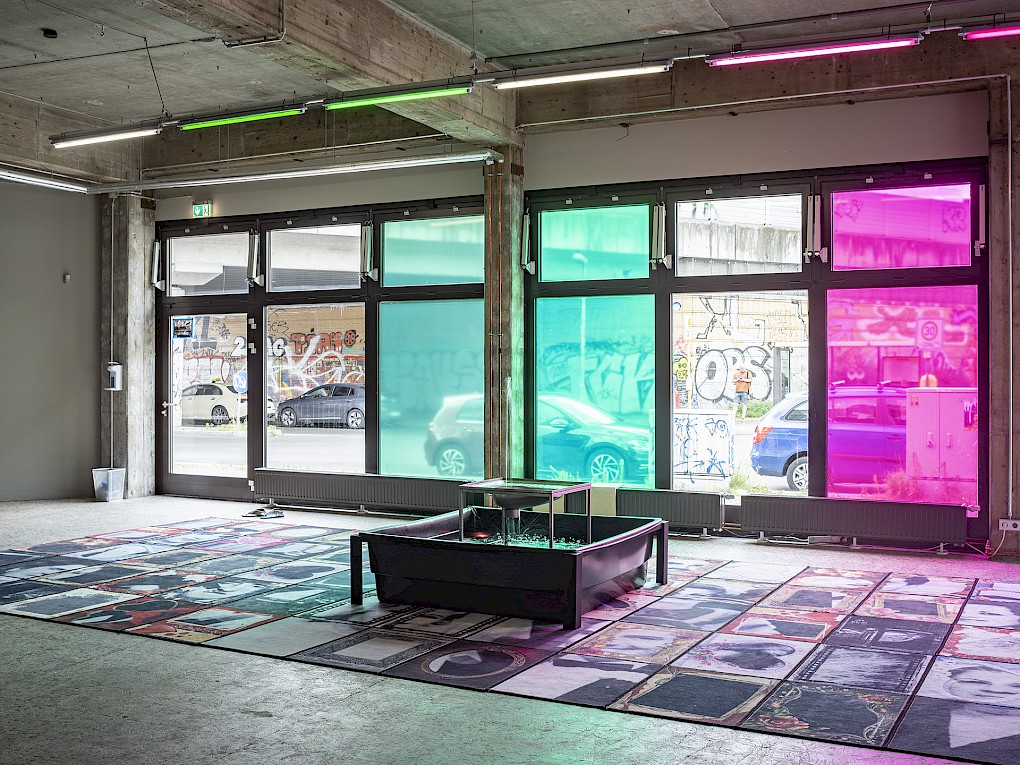
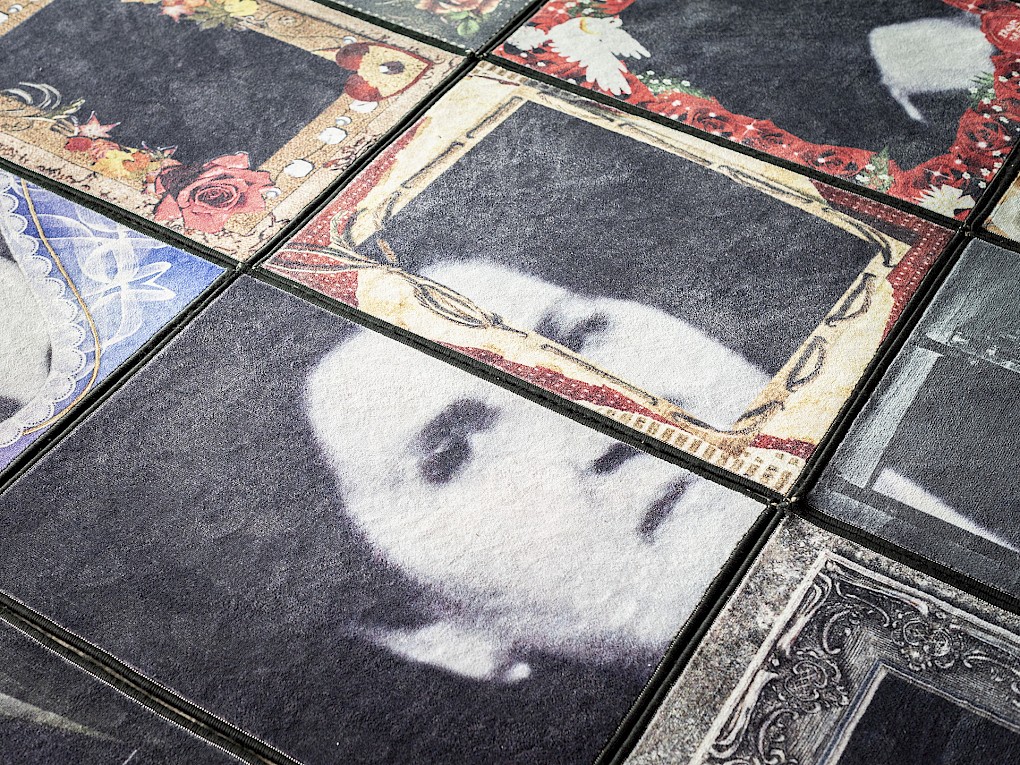
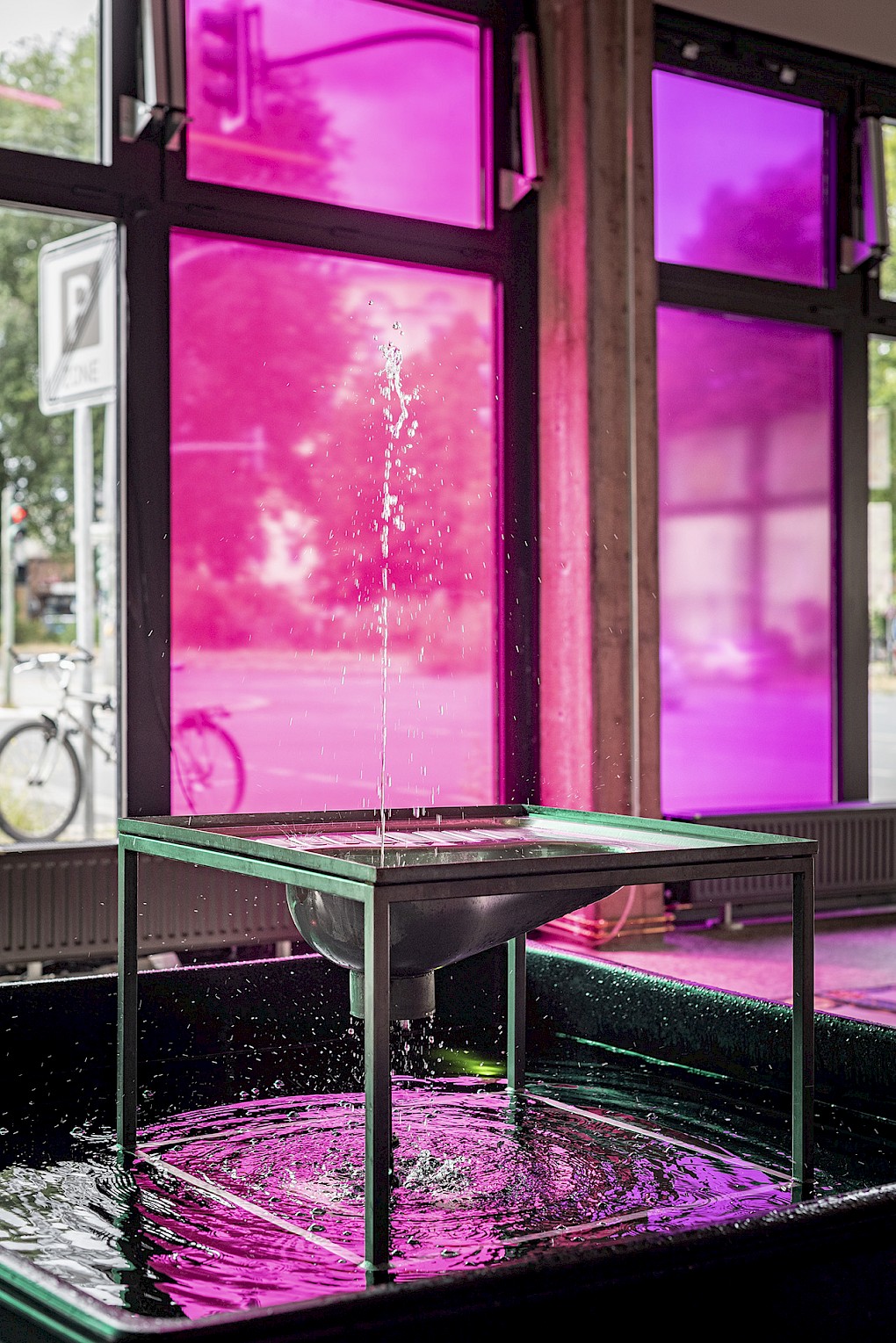
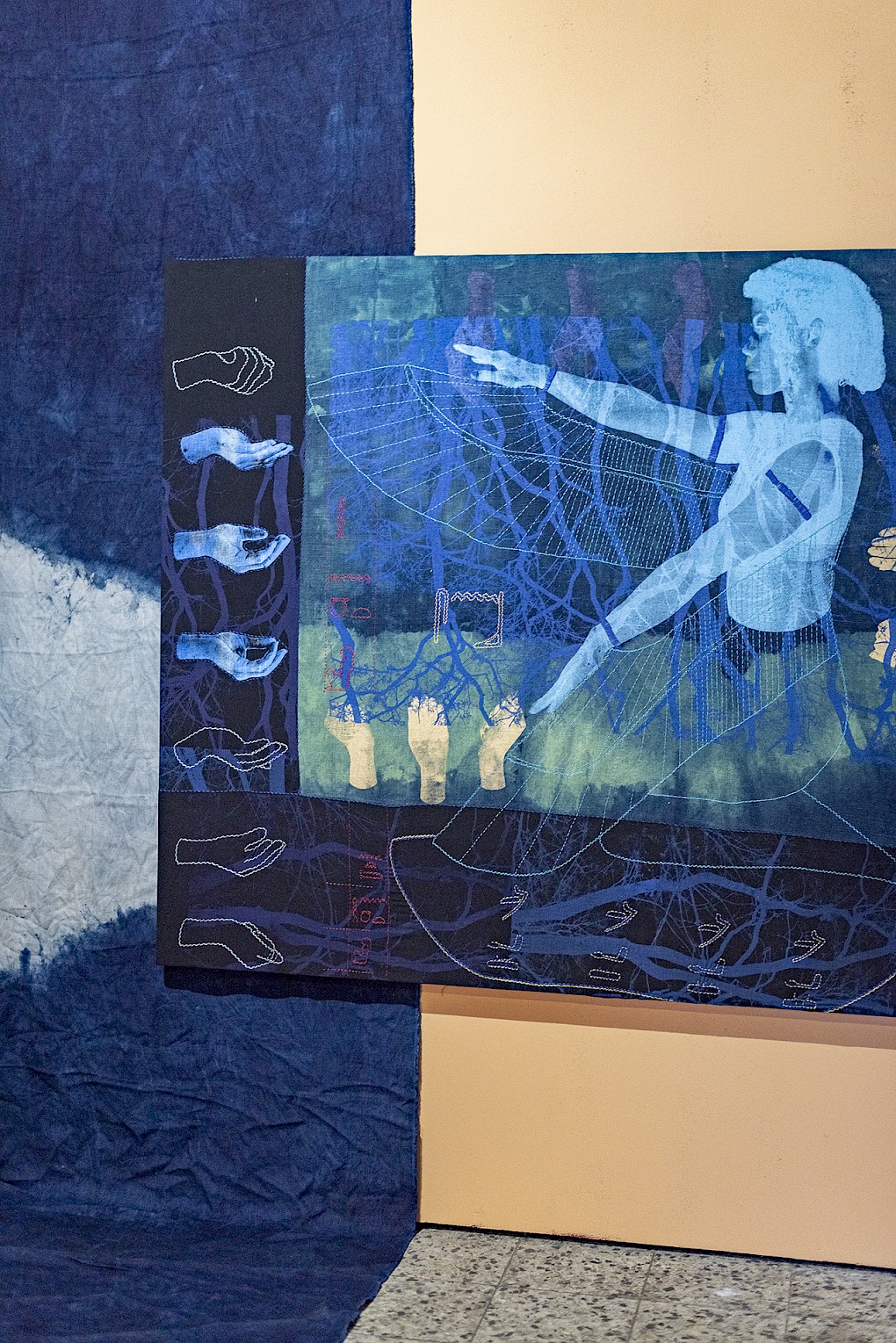
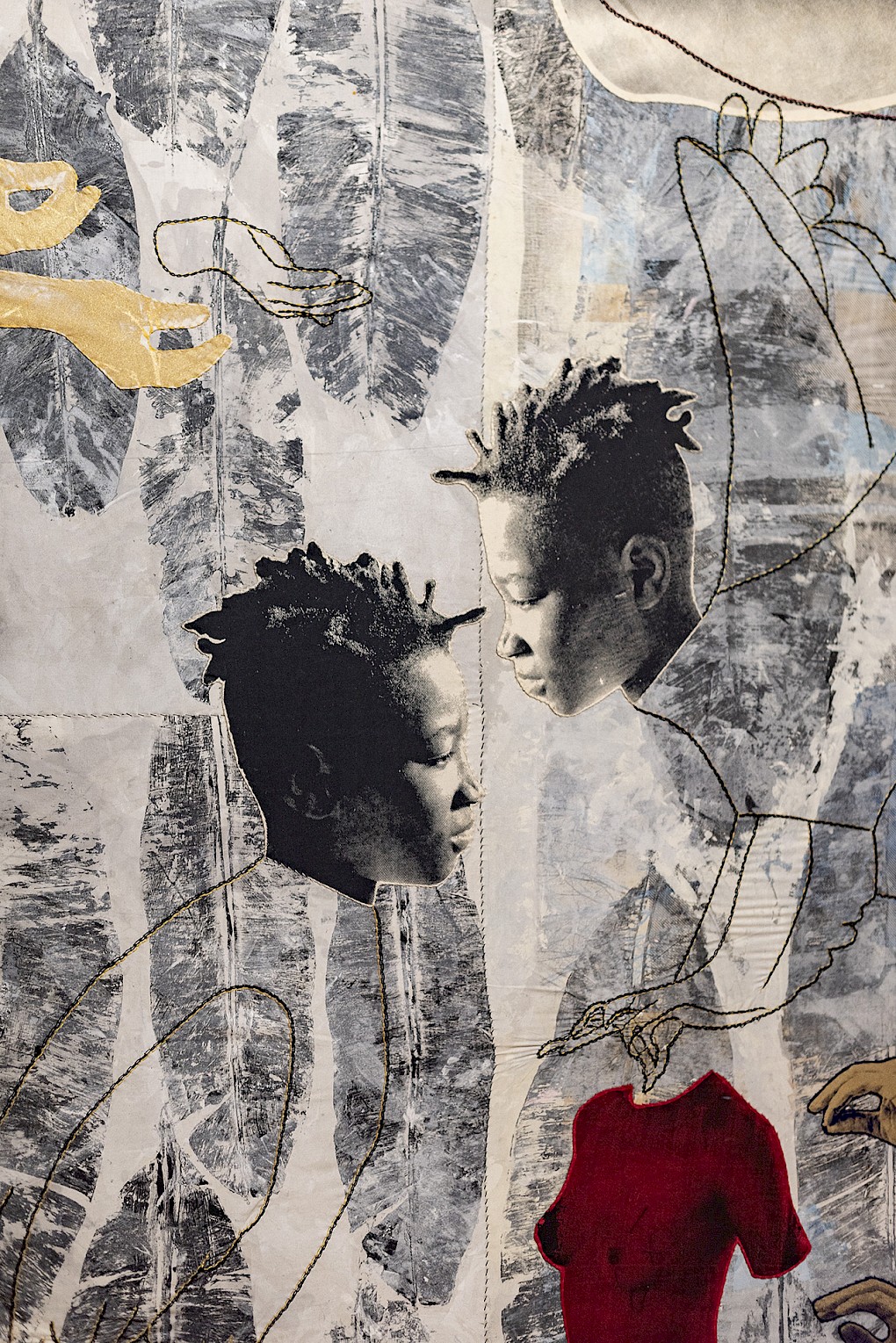
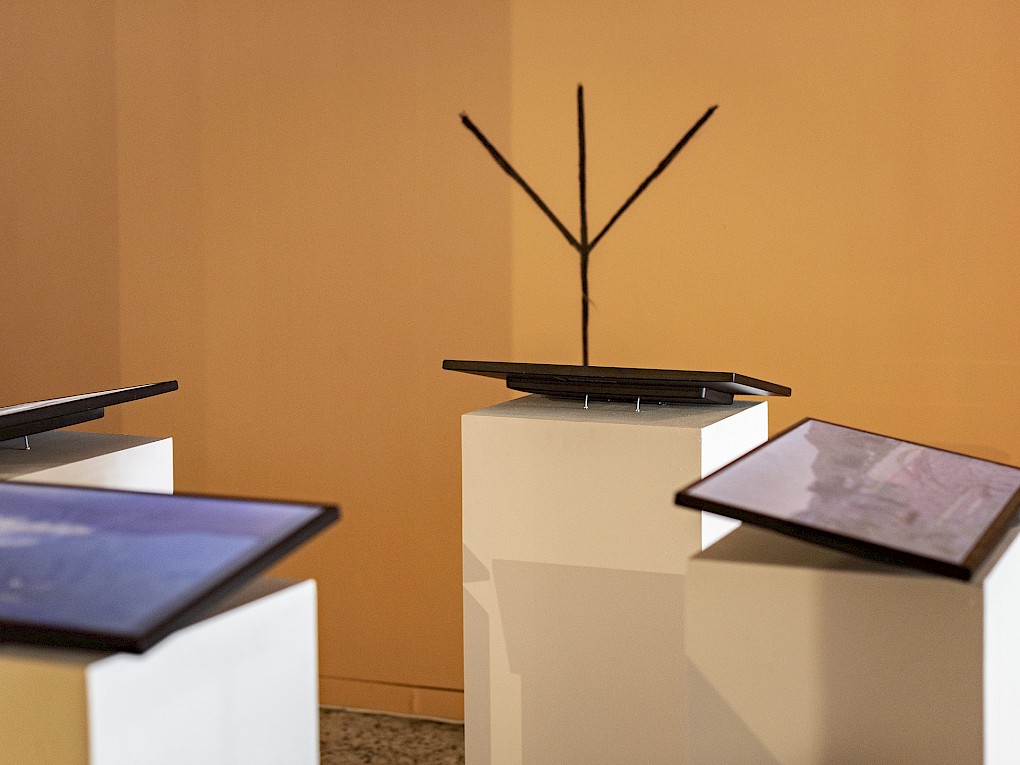
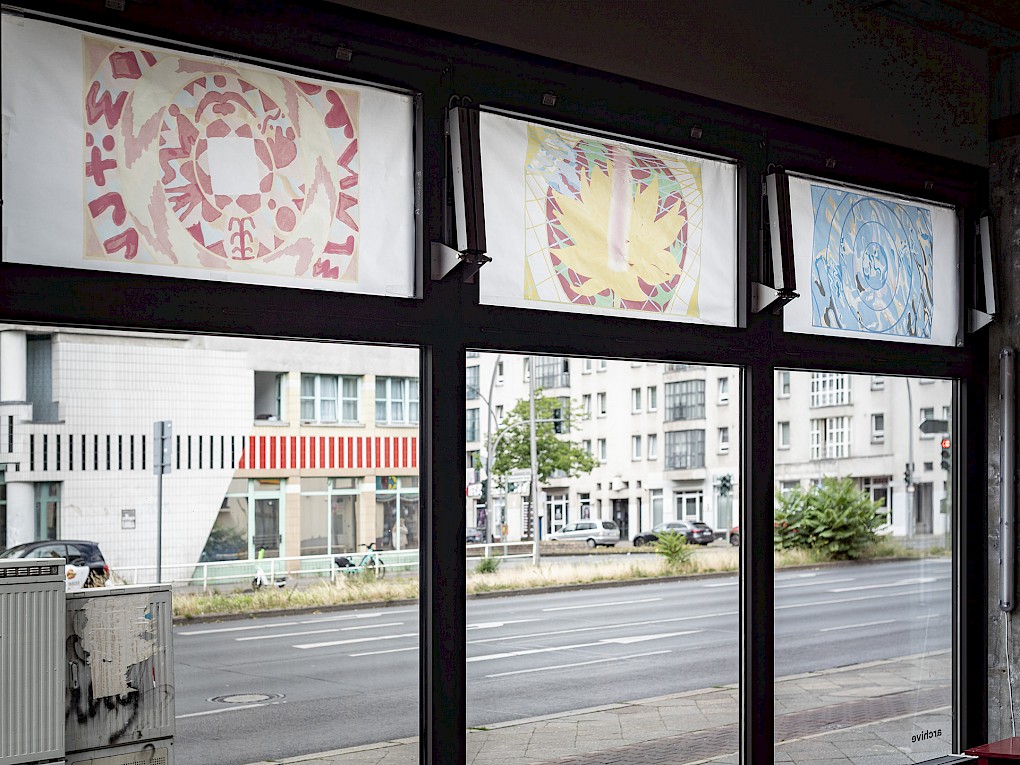
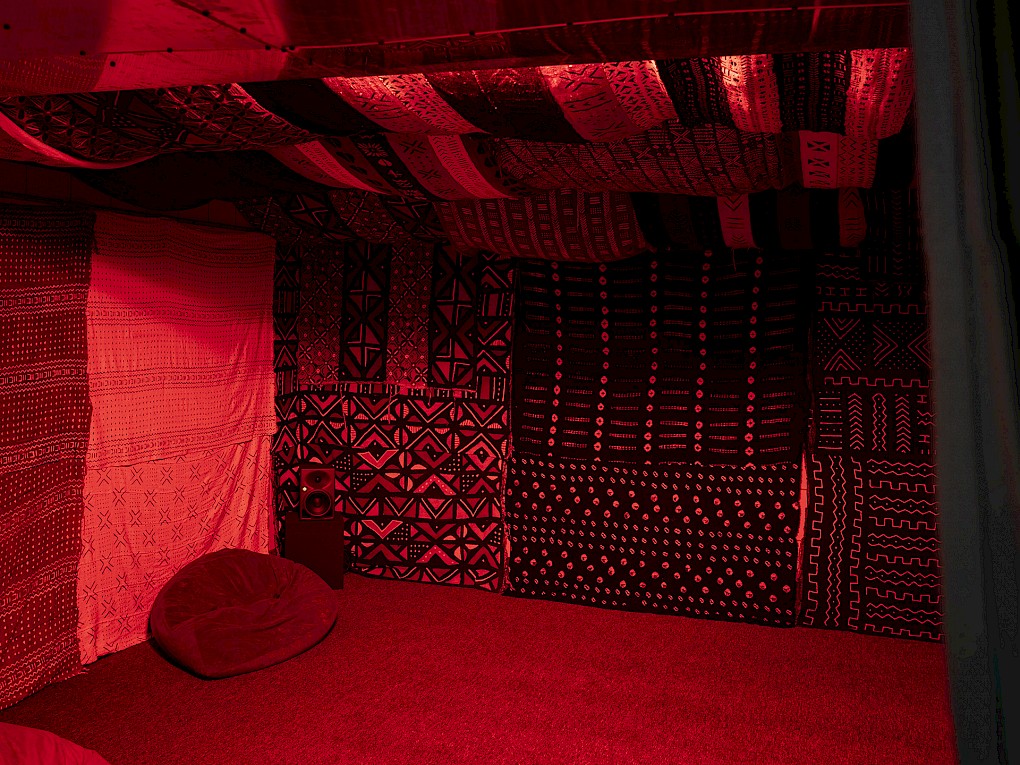
TEAM
ARTISTIC DIRECTIOn Arlette-Louise Ndakoze
Curation Kelly Krugman
Co-Curation Lynhan Balatbat-Helbock
PROJECT Management Onur Çimen
EXHIBITION PRODUCTION & DESIGN Ola Zielińska
CURATORIAL ASSISTANCE Kennedy Jones
PRODUCTION ASSISTANCE Hubert Gromny Cecilia Bien
GENERAL MANAGEMENT Lema Sikod
COMMUNICATIONS Anna Jäger
Handout Editing Anna Jäger Kennedy Jones Kelly Krugman
Handout Design Juan Pablo García Sossa
GRAPHIC DESIGN Bilge Emir
SAVVY.doc Sagal Farah Mokia Laisin
Art Handling Waylon D’Mello Santiago Doljanin Shokoufeh Eftekhar Rafał Łazar Willem van den Hoek
TECH Bert Günther
LIGHT Emilio Cordero
SUPPORT This project is funded by the Senatsverwaltung für Kultur und Europa des Landes Berlin.

